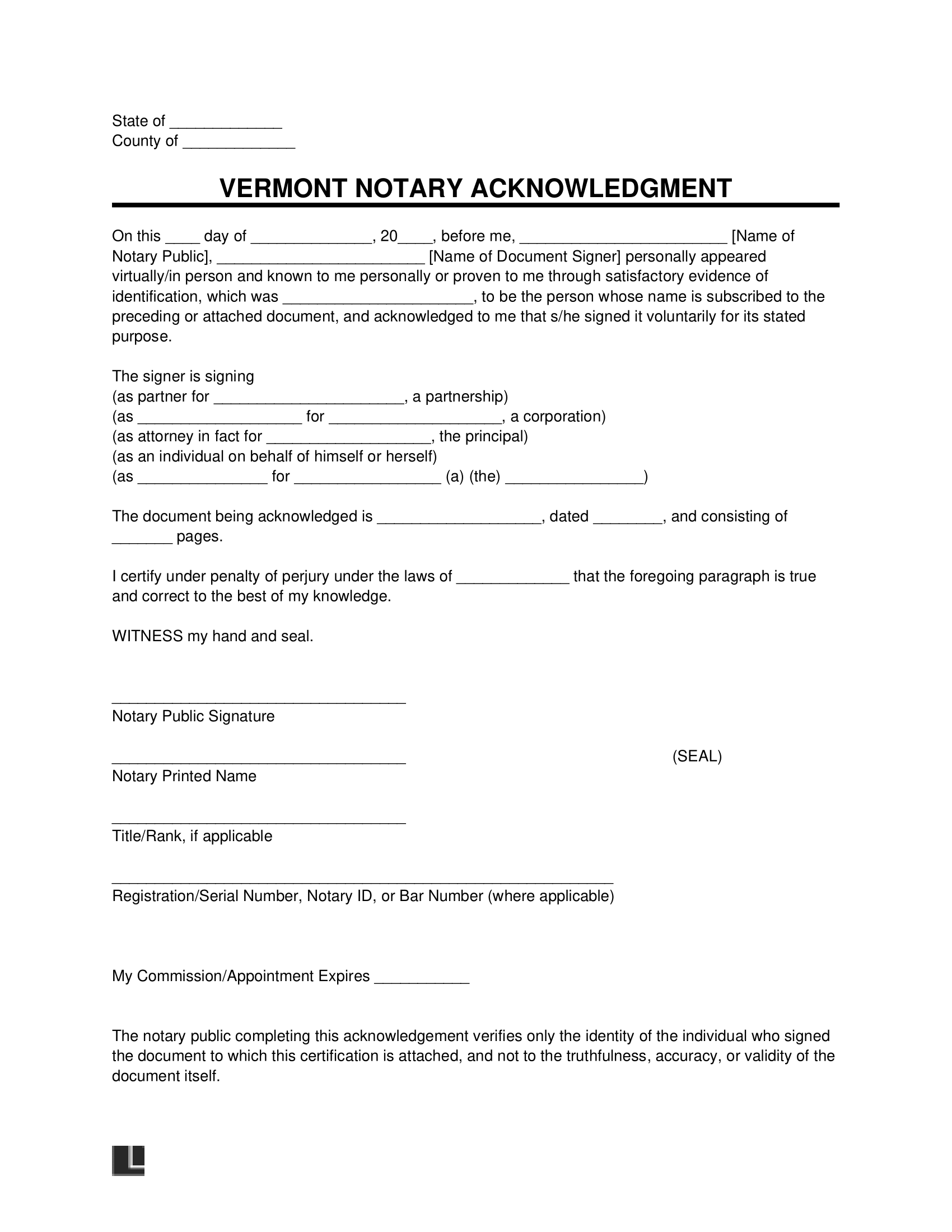A Vermont notary acknowledgment form recognizes an individual’s signature on another legal document, such as a living trust or mortgage deed. A signer presents themselves to a notary public with a completed legal document, and they sign it with the notary as their authenticator.
Before the signatory can add their signature to the document, a notary public must verify the individual’s identity. This way, they can prevent forgery. They should also confirm that the individual is signing the legal document for no other reason than its intended purpose.
Legal Considerations
Statute: Title 26, Chapter 103 (Notaries Public).
Form of Acknowledgement: According to § 5368, the acknowledgment must include the notary’s signature, stamp, title, and commission expiration date.
Notary Term of Commission: Two years. The term starts on February 1 and continues through January 31 of the second year following the term’s commencement (§ 5304(3)).
Notary Handbook: The Secretary of State offers Notary Statutes, Rules, and Resources to guide notary publics in their profession.
Is Online Notarization Legal in Vermont?
Yes. Notary publics can authenticate legal documents that individuals sign in their digital presence. The notary should have a sworn statement from a witness confirming the signer’s identity, personal knowledge of the signing party, or satisfactory evidence (like a driver’s license).
Laws: §§ 5379, 5380, and the Emergency Administrative Rules.
How to Notarize
Step 1 – Search for a Notary
Start your search online on websites like 123notary.com. You can also visit shipping stores, credit unions, and banks. Some state-specific options include Vermont State Bank and VSECU.
Step 2 – Bring Your Document
Bring your completed document with you, ensuring you fill in all fields except the signature fields. It could be something like a medical power of attorney or bill of sale.
Step 3 – Meet With the Notary
Meet with the notary so they can authenticate your signature. Vermont doesn’t set a fee schedule for notaries to follow, so you may pay varying amounts for the service depending on where you go.
During your appointment, you must identify yourself by providing a valid form of government-issued ID. If the notary knows you personally, you may not need to show ID.
Step 4 – Sign the Form
Sign your name on the form you completed in step two. Have the notary public bear witness to it. If you already signed it before your appointment, confirm that the signature is your own.
How to Verify a Notary
- Navigate to the Office of Professional Regulation’s Find a Professional page.
- Search by license number, first name, last name, and business name.
- Choose “Notaries Public” from the “Profession” dropdown menu.
- Click “Display Results” and view matching entries.
How to Write (for Notary)
- Download a notary acknowledgment form in PDF or Word format.
- Detail the county name and date of acknowledgment.
- Include your name and the signing party’s name.
- Explain the evidence they provided to verify their identity.
- Confirm who the signing party is signing for (a partnership, themselves, etc.).
- Name the document you’re acknowledging.
- Sign/print your name, write your title and serial number, and record when your commission expires.


